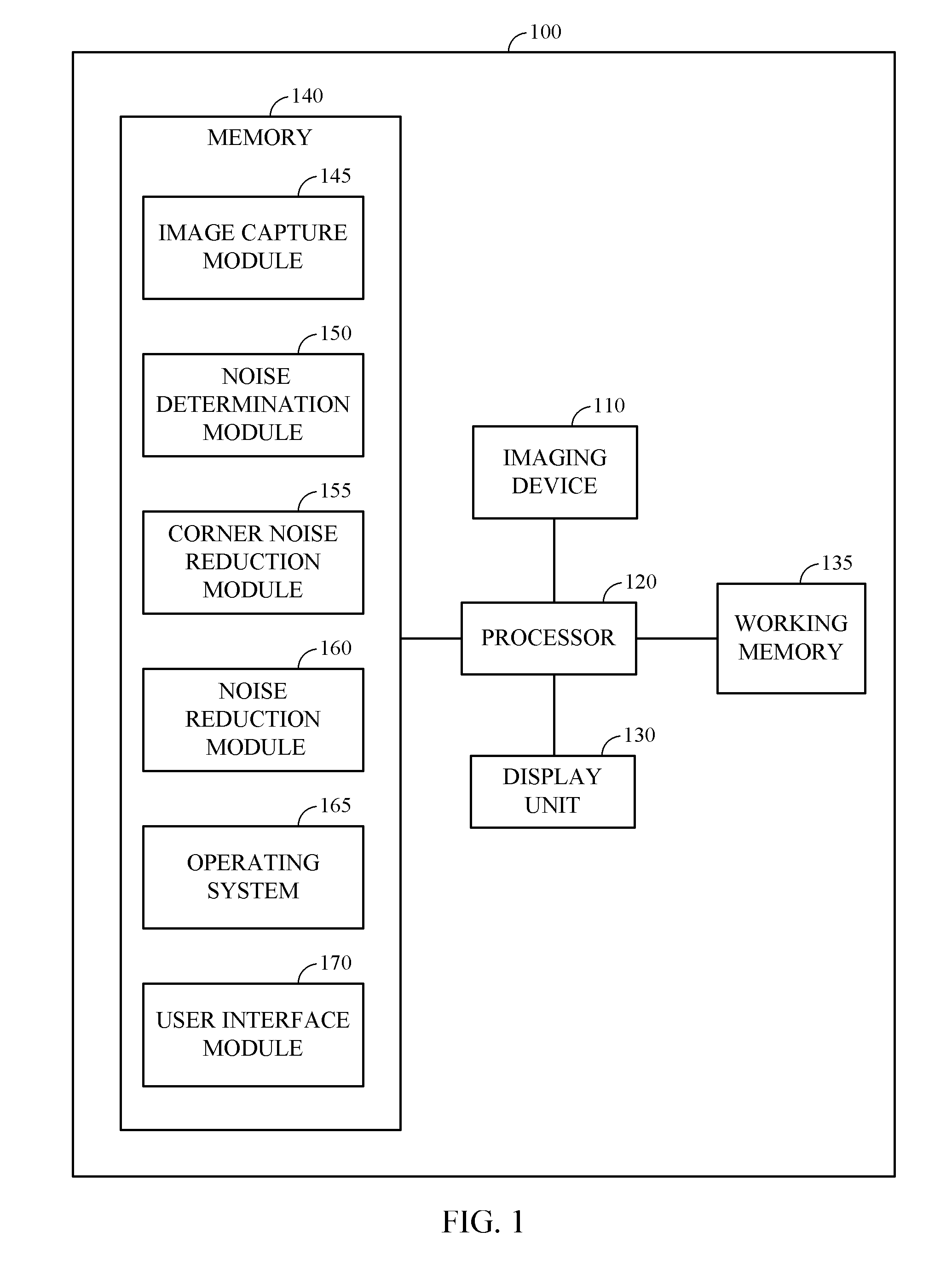System and method of corner noise reduction in an image
a technology of corner noise and noise reduction, applied in the field of image noise reduction, can solve the problems of affecting the noise properties of digital images, affecting the image quality of the image, so as to reduce noise artifacts and not introduce too much complexity to the device hardwar
- Summary
- Abstract
- Description
- Claims
- Application Information
AI Technical Summary
Benefits of technology
Problems solved by technology
Method used
Image
Examples
Embodiment Construction
[0020]Many modules in an imaging pipe line of an electronic device may be (at least partially) dependent on an accurate model of noise that is in a captured image, and the modules may have built-in processes to handle any such imaging noise. Some examples of processes to handle certain types of imaging noise include, for example, de-speckle, non-linear filtering, median filtering, and adaptive image enhancement. Corner noise reduction (CNR) processes are designed to compensate for the non-stationary effect of noise caused by any spatial varying digital gain, typically affecting the corners of an image, without adding more complexities to existing noise reduction modules (e.g., to compensate for image vignetting). “Non-stationary noise” refers to noise in which the variance of the noise is spatially variant within the image. Specifically, the non-stationary noise effect can result in images with uncertain input data. For example, the variance of noise at the center of an image is rel...
PUM
 Login to View More
Login to View More Abstract
Description
Claims
Application Information
 Login to View More
Login to View More - R&D
- Intellectual Property
- Life Sciences
- Materials
- Tech Scout
- Unparalleled Data Quality
- Higher Quality Content
- 60% Fewer Hallucinations
Browse by: Latest US Patents, China's latest patents, Technical Efficacy Thesaurus, Application Domain, Technology Topic, Popular Technical Reports.
© 2025 PatSnap. All rights reserved.Legal|Privacy policy|Modern Slavery Act Transparency Statement|Sitemap|About US| Contact US: help@patsnap.com



